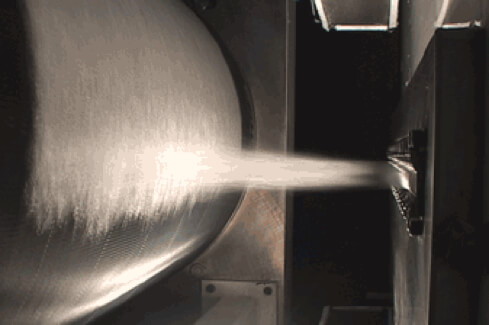Productive Process
We are able to manufacture 4 types of products for different applications and uses, such as:
(S) Spunbond
(SS) Spunbond + Spunbond
(SMS) (Spunbond + Meltblown + Spunbond)
(M) Meltblown
The production process starts with the first Spunbond layer, which initiates when the polypropylene gets in to the main extruder, through of an automatic process, the pellets are transported by a pneumatic system; which later melts at temperatures ranging between 220-250 ° C.
Once the polypropylene is completely melts in liquid phase, the material is addressed to the main mold where thousands of tiny filaments are formed. Those filaments are exposed to a thermic transformation process where through cooling (10 to 15 ° C) the stretching and hardness desired are achieved.
In that way the polypropylene filaments fall in a transportation band which form the first veil.
In the SS type case, the previous described process is made twice to form the double layer of Spunbond.
In the SMS type or Meltblown type cases, the process which forms the Meltblown layer starts when the polymer is exposed to an extrusion process at more than 250 ° C. Once the polypropylene is melted, it is blown directly to the calandra through an intense airflow which sucks and organizes the fibers; There is when the fusion process by external stretching is achieved, giving place to the final fiber which is very short and tiny.
For the third Spundbond layer, the process is exactly the same as the first one. This last veil falls in the transport band in the same way than the first layer.
After the envelopment over the calandra, the 3 layers are merged through a combination of pressure and temperature which are executed by the superior and inferior caladras. Finally, by means of different tensor stages, the uniform distribution of the fibers is achieved in the winding process.

Photography: Meltblown Blowing
Laboratory
To guarantee the quality of the final product, different tests are constantly performed on each batch produced in our own laboratory. Depending on the client’s request, we are able to control the BFE, PFE, resistance capacity, tension capacity, elongation limits, and water column among others.
In the same way, we count on Nelson Labs laboratory as an ally in the United States, which revalidate our technical datasheets to accomplish with the most high-quality standards to satisfy the industry
